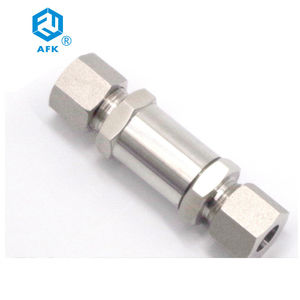
H12-B Stainless Steel 316/304 Air Water Check Valve High Pressure Carbon Steel Thread Non Return Valve





















CE check valves are essential components in various industrial and commercial fluid systems. These valves, certified to meet European Union standards, play a crucial role in ensuring the unidirectional flow of fluids, preventing backflow that could potentially damage equipment or disrupt system operations. Designed to automatically allow flow in one direction and prevent reverse flow, CE check valves are employed in a multitude of settings, from water treatment plants to chemical processing industries.
The diversity of CE check valves is evident in their range of types and materials. Common types include swing, lift, and in-line check valves, each with unique features suited to different applications. Material selection is critical, with options like stainless steel, alloy, and carbon steel offering varying degrees of durability and resistance to corrosion. The choice of material typically depends on the fluid characteristics and the operating environment, ensuring compatibility and longevity of the valve.
CE check valves are integral to systems that require prevention of backflow. Their applications span across industries, including water supply, oil and gas, and pharmaceuticals. Key features of these valves include their compact design, which makes them suitable for tight spaces, and their selection of colors such as black, white, and silver, allowing for visual integration into existing systems. The design of these valves ensures minimal pressure drop across the valve, maintaining system efficiency.
The advantages of using CE check valves are numerous. They provide a reliable solution for preventing reverse flow, which is critical for protecting equipment such as pumps and compressors. Their automatic operation reduces the need for manual intervention, enhancing system safety and reducing maintenance requirements. Additionally, the CE certification assures users that the valves meet stringent quality and safety standards required in the EU.
When selecting a CE check valve, several factors should be considered. The valve's size and connection type must be compatible with the existing piping system. The pressure rating of the valve should match or exceed the maximum operating pressure of the system. Furthermore, the valve's material should be chosen based on the fluid it will encounter, ensuring chemical compatibility and optimal performance.
While installation and maintenance services are not directly provided, understanding these aspects is crucial when dealing with CE check valves. Proper installation is key to valve performance and longevity, and it should be conducted in accordance with the manufacturer's guidelines. Regular maintenance checks are recommended to ensure the valve's functionality, although the low-maintenance design of CE check valves contributes to their overall cost-effectiveness and reliability in long-term applications.